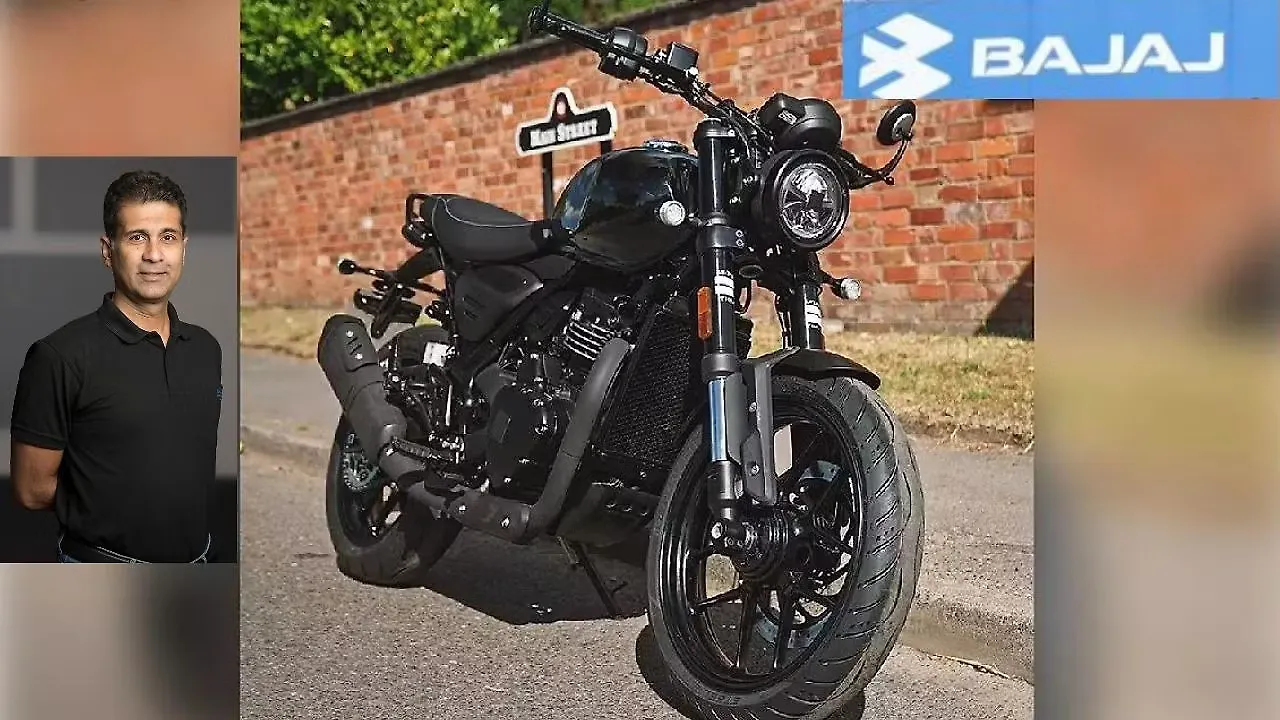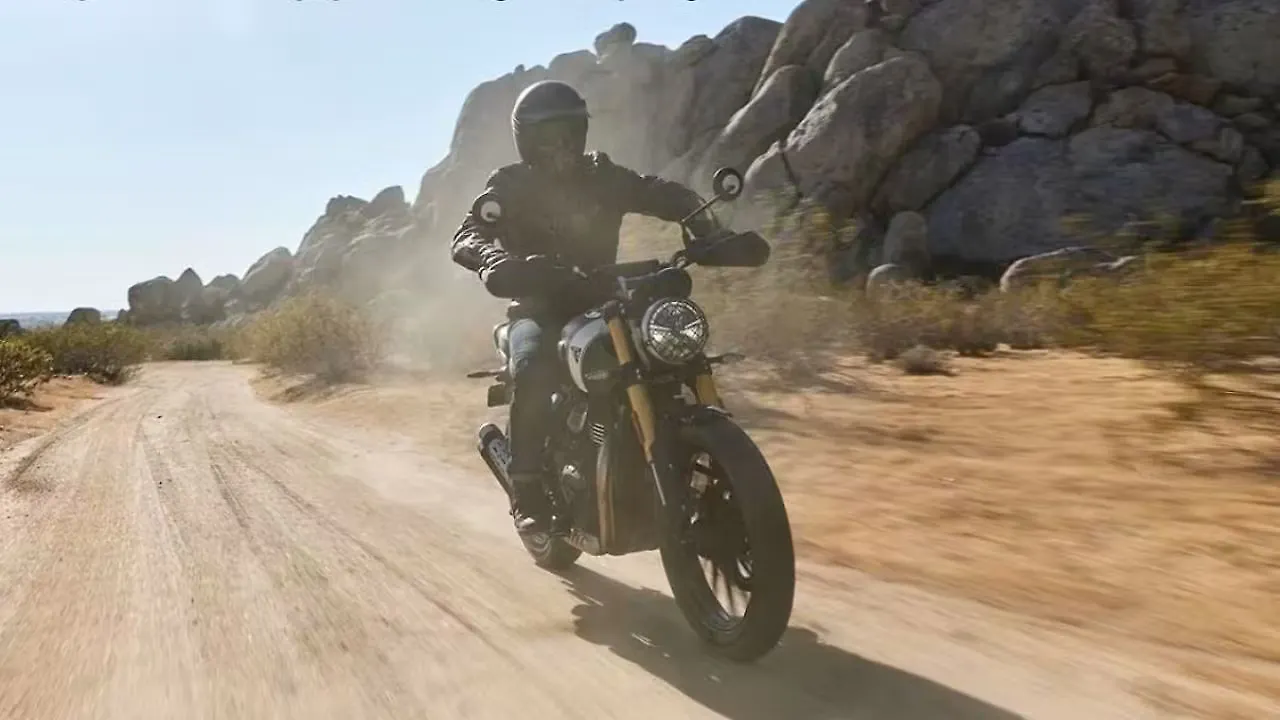
With Triumph Motorcycles and Bajaj Auto launching the Scrambler 400 X as their second offering, following the Speed 400 some months earlier, the stage is set for some interesting dynamics in the premium midsize motorcycle space.
From Bajaj Auto’s point of view, it marks a promising start to the partnership with Triumph which should hopefully replicate the successful one it has had over the last 16 years with KTM. Bajaj took a 14% stake in the Austrian-based bike maker way back in 2007 and beyond this component increasing over the years, the bigger story is the strengthening of the partnership between the two companies.
In the case of Triumph, there is no equity involved in the partnership with Bajaj Auto but a strong manufacturing and distribution business model which will see brands such as Street and Scrambler sold in markets both here and overseas. It would be pretty much on the lines of the KTM alliance where sub 400cc bikes are produced at the Bajaj Auto plant near Pune and then shipped out to other parts of the world.
Three motorcycle brands — Bajaj, KTM and Triumph — with clear cut objectives in place. How does it all balance out? Rajiv Bajaj, Managing Director of Bajaj Auto, put this query in a deeper perspective during the course of a telephone interview with Mobility Outlook.
As he explained, the “fundamental thing” is that Bajaj Auto has always been a value-for-money brand. There was a time when this was also the tagline of the company and “is a great place to be in” from the viewpoint of customer perception. Likewise, other automakers like Honda and Maruti could also be perceived as value-for-money brands.
“By stating so, I don't mean cheap but truly value-for-money that is the foundation or the bedrock of our strength that is coming in from quality and scale. You don't become value if you don't give quality and you don't become value-for-money if you don't have the scale to be competitive,” said Bajaj.
Product Vs Brand
That in essence, he continued, was the fundamental position of Bajaj Auto in the two-wheeler arena. “Now on the other side, if you wish to participate in the more premium, lifestyle or niche segment of the industry, obviously value-for-money brands will not have traction. One may have the ability to design the product but the brand will not have pricing power and that is the distinction between product and brand,” explained the MD.
To cite an example, Titan is a great success story and a great value-for-money brand but even if it were to make a unique watch with gold and diamonds, it will still not get the price that a Rolex will. This is precisely why a company like Bajaj Auto “told ourselves in 2007 that if we want to address the niche of the premium segment in India and advanced markets, there are fundamentally two approaches to do that”.

One was to create its own premium brand where the best example in recent times has been the case of Toyota Motor Corporation creating Lexus as its face of luxury. The other way was to do this in a more inorganic way through partnerships.
Bajaj Auto chose the latter because the former route would have just not been a long drawn out process but also fraught with challenges in a mature industry like two-wheelers. Beyond this, there was really no new way to recreate an old heritage or legacy.
“We felt that instead of doing it organically, an inorganic strategy of partnerships would be more potent and quicker. We said to ourselves that there are always two opportunities at two ends of the spectrum, two sets of consumers and contrasting mindsets,” elaborated Bajaj.
The sporty consumer as well as the more classic consumer were part of this model which is where brands like KTM and Triumph fitted into the overall plan. That was how the company went forward with this strategy which was based on very sound principles.
“It was not opportunistic but strategic and sound which is why we have been able to make a success of it. Clearly KTM is a success story and Triumph has already started off very well,” said Bajaj. How does the brand strategy then pan out especially when three separate motorcycle makers are involved?
Story And Experience
“What is meant by brand? Product is the physical manifestation of the brand but not the brand. In my mind, brand is equal to product plus story plus experience,” replied the MD. A brand like KTM or Triumph is equal to a product and there is also a story. In the case of Triumph, for instance, this could be about its origin, the early days, what went right and wrong, its customers and so on.
This story, in turn, could be an immaterial thing and then there is a customer thing where they will “tell you about their experiences”. As Bajaj reiterated, a story is not a physical thing but a thought. A brand has three components: a physical component called the product and two immaterial components called the story and experience.
“Brands which do not have strong enough stories and consumer experiences to tell, in my view, do not remain brands but just become products. They become commodities competing on price and distribution. They don't compete on position and differentiation,” he said.
This then is the fundamental definition of a brand and it becomes self-evident that each brand in this case — Bajaj, KTM and Triumph — has its own unique identity and differentiated position which cannot be compared to any other. Each one’s story and experience is different. In this case, obviously one brand cannot affect the other because the two are completely different, continued Bajaj.
“Having said this, I would like to think like this and divide this issue into two parts: B2C and B2B. In B2B, KTM and Triumph have a positive rub-off on Bajaj though there is no way to measure or quantify that which I am aware of,” he said.

B2B And B2C Differentiator
B2B in this case translates into an aspirational quotient: when someone wants to be an employee of Bajaj Auto or its supplier, dealer/distributor, banker, partner or shareholder. It is also very likely that when Triumph wanted to team up with Bajaj Auto, they were encouraged by the KTM success story.
These are all B2B relationships where there would be a positive rub-off but the most important purpose of a brand is B2C and in the eyes of the customer, “I cannot believe there would be any positive rub-off”.
Again, there is no way to prove this but “I don't think a customer would say he would buy a KTM because he had a great experience with Pulsar. I don't think a customer will say Triumph is a great brand and, therefore, choose to buy a Dominar'.
Of course, casual conversations with buyers will indicate something to this effect in terms of a reason to buy a brand but it would be erroneous to infer that the customer’s decision is solely resting on this premise as some kind of a sway factor. “He is just stating a fact but when you dig deeper, you will figure out that a decision to buy a Pulsar or Triumph will actually come from a deep place within that brand,” explained Bajaj.
It is from the story of that brand, can one do word-of-mouth from the viewpoint of user experience. This would really be the driving force and not otherwise, he stressed. Bajaj Auto and Triumph are well reputed brands but the two will not influence each other.
“We have to keep in mind that when it comes to brand, companies have two fundamental brand strategies — the brand strategy of a niche manufacturer, where for a Triumph or KTM, they are niche and become relatively expensive,” elaborated Bajaj.
In the case of either KTM or Triumph, the company brand and product brand become the same whereas in the case of Bajaj Auto, Honda or an FMCG entity like Unilever, these are horizontal business models because they are in the value-for-money space.
Company, Brand Fusion
There is “a big difference” in the way the brand structure based on the business model of a niche manufacturer is versus a mass or value-for-money manufacturer. “In the case of KTM or Triumph, the company and product brand are the same whereas in Bajaj Auto, the company name becomes the B2B brand (the banker, dealer, supplier brand),” he said.
Customers will typically say they own a Pulsar and not a Bajaj quite unlike the reference to a KTM or Triumph. The B2B brand is the Chetak or Pulsar and they cannot, in the eyes of customers, influence each other since “they have their own story, experience and word-of-mouth”.
People buy them for their individual identities and story and experience and not because they are happy with one which prompts them to buy the other, signed off Bajaj. As the company now sets about drafting its growth script with Triumph, the momentum is firmly in place to strengthen its foothold in the global motorcycle arena. Each motorcycle brand, in its turn, has its own role to play.
Also Read: